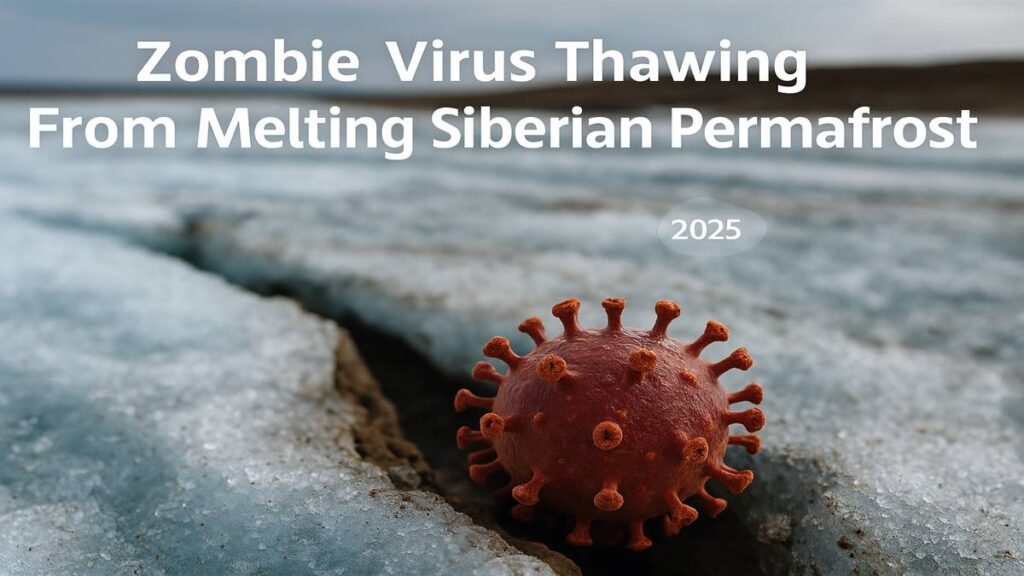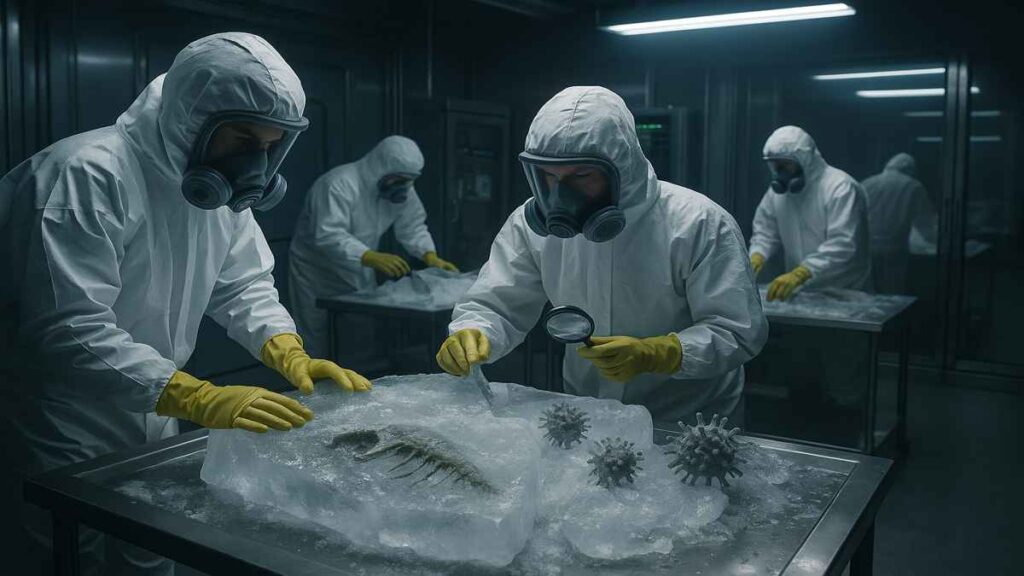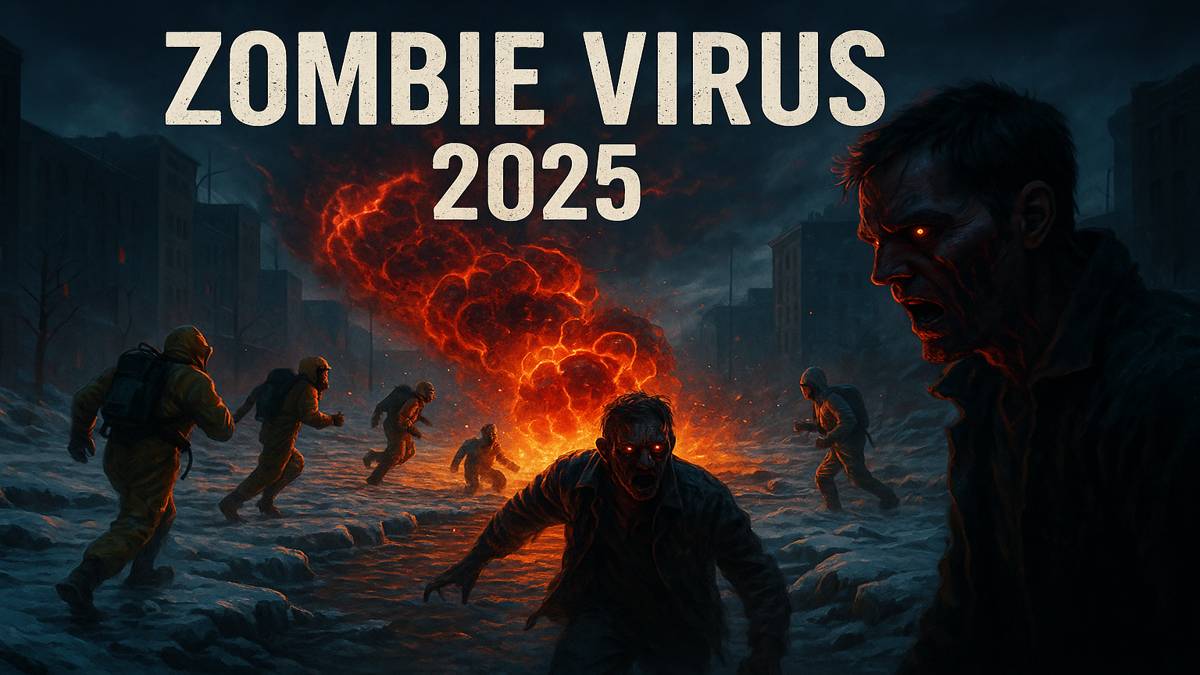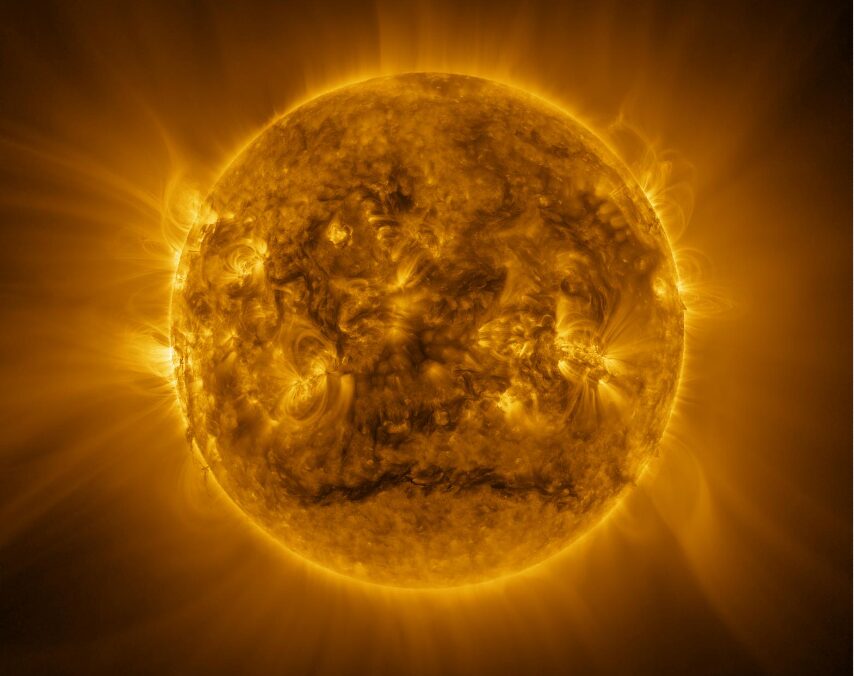In 2025, scientists are beginning to describe the ancient viruses they unearthed buried deep in the melting permafrost of Siberia as coming back to life. One of these has been sensationally called the “zombie virus.” This may sound like an outlandish science fiction tale, but it’s a terrifying reality, backed by real research, and it can have dreadful consequences for our planet.
What is the Zombie Virus?
“Zombie virus” describes long-dormant viruses recently awoken in the Siberian permafrost due to global temperature rises. While these viruses are not ink-and-celluloid zombies, they are viruses that have been inactive for thousands of years and are being roused from dormancy in labs worldwide.
In 2023, one of the lead virologists of France, Jean-Michel Claverie, and his team at Aix-Marseille University, successfully revived 13 viruses from frozen soil. The oldest virus, a Pandoravirus, is over 48,500 years old. This revival confirms that such microbes of zombie virus can remain infectious for millennia under frozen conditions. that such microbes can remain infectious for millennia under frozen conditions.
This kind of discovery rivals breakthroughs like CRISPR Gene Editing 2025: Can We Cure Diseases Forever? — only this one brings ancient threats back instead of eliminating them.
Melting Permafrost: A Hidden Viral Vault
Permafrost is the planet’s cryogenic time capsule — frozen ground that preserves everything from woolly mammoths to dangerous pathogens. However, climate change is waking this vault from its deep freeze.
In places like Siberia, Alaska and Greenland, thawing ice is releasing not just viruses but also methane gas, radioactive waste, and bacteria that haven’t seen the light of day for millennia. The United Nation Environmental Programme (UNEP) cautions that this may initiate new disease outbreaks that the world is unprepared for.
In 2016, thawing permafrost triggered a real-life anthrax outbreak in northern Russia. According to ABC News, the heatwave-melted soil released anthrax spores from a reindeer carcass, infecting 21 people and tragically killing a 12‑year‑old boy.

Are Zombie Viruses a Real Threat?
To this point, revived zombie viruses have infected amoebas—poisoning humans is yet another story. Experts warn, however, that this is just the beginning. These ancient microorganisms could evolve or mutate, and, even worse, our immune systems don’t have a memory for how to fight them.
The Arctic Institute concurs. In their evaluation of Arctic zombie viruses, they describe how a single virus could lead to unpredictable epidemics—especially in combination with modern mobility and weak global health monitoring.

The Role of Climate Change
According to NASA Arctic Research the Arctic is warming about four times faster than the rest of the Earth.
As glaciers melt and permafrost starts to break apart, ancient biological material is now returning to the surface, including viruses. It has created perfect conditions for long-frozen microbes to re-emerge.
This is the same extreme warming that was discussed in our Feature: Global Heatwave 2025: Earth’s Hottest Year. And it is moving in one direction towards something.
Could a Pandemic Come From a Zombie Virus?
While there is no present evidence that zombie virus infected humans, the scientists are cautious. Why? Because the microbes have no precedent in our immune systems.
- They may mutate.
- They may spread.
- They may do both without any signs of infection.
We have no idea what is down there – and that is the scariest part.
What Can the World Do?
- Act Fast on Climate:
The faster we cut emissions, the slower the Arctic thaws. - Monitor the Ice:
We need better surveillance of permafrost zones. - Boost Biosecurity:
All virus like zombie virus revival research must be conducted with top-level containment protocols. - Educate the Public:
From pathogens to polar melt, the public must understand this hidden danger of global warming.
Final Thoughts
You may think, zombie virus sounds like a horror film, but I can assure you that what is lurking in the ice, although it resembles modern fiction and science fiction in nature, is very real. Desiring to thaw the planet’s ice caps, in time, means giving ancient foes a considerate awakening.
This has nothing to do about melting glaicers or polar bears; even though that is important now we need to concern ourselves with reinstating biological threats in a warming world.
Let’s face it, the deeper we ice melts, the darker the surprises frozen in time rights.




